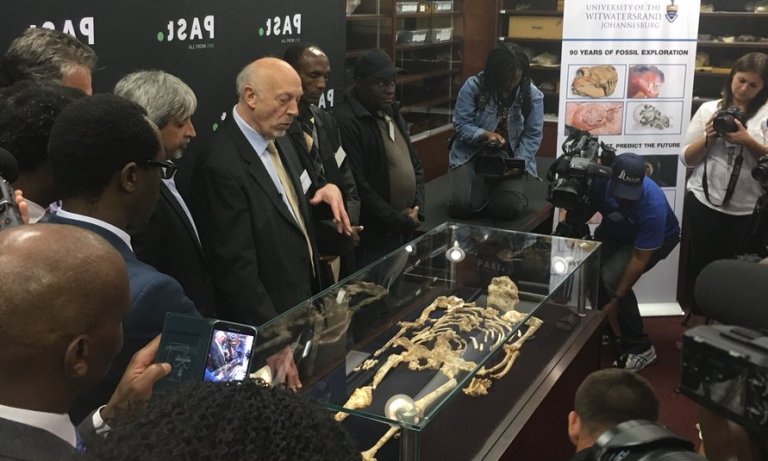
Oldest Complete Human Ancestor Skeleton Unveiled in South Africa – Little Foot
Little Foot, the world’s oldest complete Australopithecus skeleton, was unveiled at the University of Wits in Johannesburg, South Africa, on Wednesday 6 December 2017, and has made headlines around the world. The fossil – believed to be of a 30-year-old female – was discovered by South African palaeoanthropologist Ron Clarke, who took part in the […]

Little Foot, the world’s oldest complete Australopithecus skeleton, was unveiled at the University of Wits in Johannesburg, South Africa, on Wednesday 6 December 2017, and has made headlines around the world.

The fossil – believed to be of a 30-year-old female – was discovered by South African palaeoanthropologist Ron Clarke, who took part in the big reveal yesterday.
“This is one of the most remarkable fossil discoveries made in the history of human origins research and it is a privilege to unveil a finding of this importance today,” says Clarke.
He had found one of the fragments of the foot of the Australopithecus skeleton in a box of animal fossils in 1994. Three years later he discovered parts of the skeleton’s other foot at a medical school in Johannesburg.

According to Maropeng, it took his assistants – Stephen Motsumi and Nkwane Molefe – a day and a half of exploring a deep underground cave to search for any possible broken bone surface to discover what would eventually be recognised as the most complete Australopithecus skeleton ever found… but it took 15 years of painstaking work to excavate the remains.
And that was followed by years of careful work to reconstruct and clean the bones.
Clarke said in a statement from Wits University that since the excavation, “I and my assistants, Abel Molepolle and Andrew Phaswana, have spent the last five years cleaning the matrix from the bones to expose them fully.
“I have reconstructed the many broken and fragmented elements, and most of the skeleton’s reconstruction is now complete. I also trained Abel and Andrew in mould-making and casting, and together we have so far moulded and cast many of the elements, which are helping greatly in the analysis of the specimen by various members of our team.”
It’s believed that the female had fallen into a hole and died, and had been buried in rock at Sterkfontein – about 40 km from Joburg – for almost 3.6 million years! (The Sterkfontein Caves are recognised as one of the world’s richest fossil sites.)

Clarke has identified Little Foot as Australopithecus prometheus, a species that was first identified in Limpopo in 1948.
Lindsay Marshall, Maropeng curator, says this find is a significant one for Maropeng.
“It was 20 years ago, and I was a third-year archaeology student, when the find was first announced. It was at this time that my passion for the Sterkfontein Caves and the Cradle began. To be in my role 20 years later and witness the culmination of decades of incredibly intricate work by Prof. Ron Clarke and his team is a source of great pride.
“My team, the guides and I look forward to sharing all the new information on this incredible find with the public who visit the Sterkfontein Caves.”
#LittleFoot #EWN [VIDEO]The Big Reveal. Ron Clarke reveals LittleFoot, the fossil of a woman understood to have been buried in rock at Sterkfontein for almost 3.5 million years. It’s estimated she was 30 years old when she fell into a hole and died. KS pic.twitter.com/k1i8GyB1JI
— Kat Sekhotho (@KatSekhotho) December 6, 2017
Fascinating! After 20 years of excavation and reconstruction, #LittleFoot is unveiled! Prof Ron Clarke, Stephen Motsumi and Nkwane Molefe found this Australopithecus skeleton of a human ancestor pre-dating 1.5 million years in Sterkfontein Caves outside Johannesburg in 1997. pic.twitter.com/DssqKH1ZPP
— Ulrich Janse van Vuuren (@UlrichJvV) December 6, 2017
@PASTEvolve announcement on #LittleFoot An almost complete discovery of our ancestral roots -3.6 m years old. Amazing. #Africa #cradleofhumanity #allfromone @AfricansRising @lead_sa pic.twitter.com/IkGQyOiqmQ
— Jay Naidoo (@Jay_Naidoo) December 6, 2017
Watch: Introducing Little Foot
Source: www.maropeng.co.za
